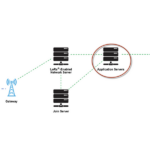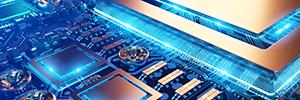In the world of wireless communication, LoRa (long-range) technology has been gaining popularity due to its long-range capabilities, low power consumption, and cost-effectiveness.
There can be serval applications deployed because of the features like low cost and long range where only one temperature sensor is used to monitor the temperature of a city; with the help of LoRa, there can be several hundreds of sensors deployed with very low cost, and the estimations can be taken precisely for whole cities.
We will be looking more into applications like this below.
Smart City applications
LoRa technology is ideal for Smart City applications, as it enables long-range communication between devices and gateways. Some of the key Smart City applications for LoRa include smart parking, smart lighting, waste management, air quality monitoring, water management, and metering solutions.
Smart parking
LoRa sensors can be used to monitor parking spaces in real time, enabling drivers to quickly find available spots and reducing congestion on the roads. For example, ultrasonic sensors can be installed in each parking space to detect the presence of a vehicle, and the data can be transmitted to a LoRa gateway for real-time monitoring.
Smart lighting
LoRa can be used to remotely monitor and control streetlights, adjusting their brightness based on the time of day or traffic conditions. For instance, light intensity sensors can be deployed in streetlights, and LoRa can be used to communicate the sensor data to a central control system to adjust the brightness levels accordingly.
 Waste management
Waste management
LoRa sensors can be placed in trash cans to monitor their fill levels, enabling garbage collectors to optimize their routes and reduce costs. For example, ultrasonic sensors can be installed in trash cans to measure the fill levels, and LoRa can be used to transmit the data to a waste management system for monitoring and analysis.

Air quality monitoring
LoRa sensors can be used to measure air quality in real time, alerting city officials to potential health risks and enabling them to take action to improve the environment. For instance, air quality sensors can be deployed at various locations throughout the city, and LoRa can be used to transmit the sensor data to a central monitoring system for analysis.
Water management
Water management is done via a plethora of sensors for water quality, water flow, water pressure, and water level.
Water quality sensors measure various parameters such as pH, temperature, dissolved oxygen, and conductivity to monitor water quality and detect any potential contamination or pollutants. Water flow sensors measure the volume and rate of water flow in the city’s water supply system, helping to detect leaks and reduce waste. Water pressure sensors measure the pressure of water in the supply system, allowing for better management of water distribution and identifying potential leaks. Lastly, water level sensors measure the water level in reservoirs, tanks, and other water storage facilities, providing valuable data for managing water supply and distribution.
 Metering solutions
Metering solutions
LoRa-based metering solutions offer a low-cost, long-range alternative to traditional wired systems, making them ideal for use in remote or hard-to-reach locations. LoRa-based metering solutions can be used for a wide range of applications, including energy metering, water metering, and gas metering. They also use battery-powered sensors that can last for years, eliminating the need for frequent maintenance or replacement.
Overall, LoRa technology has the potential to revolutionize the way cities are managed and monitored, enabling efficient and cost-effective solutions to common urban problems.
 Agriculture applications
Agriculture applications
LoRa sensors such as soil moisture sensors, humidity sensors, temperature sensors, and Weather stations can be used in precision agriculture to monitor and optimize crop growth.
Soil moisture sensors are used to ensure that crops receive the right amount of water, while humidity and temperature sensors can be used to monitor growing conditions and prevent plant stress. Humidity sensors can also be used to monitor weather conditions, enabling farmers to make informed decisions about planting and harvesting.

LoRa-based agriculture solutions can be used to track livestock, monitor feed and water levels, and optimize farm equipment and machinery. All these applications can help farmers increase yields, reduce costs, and improve the sustainability of their operations.
Asset tracking systems
LoRa (long-range) Asset Tracking System is a wireless technology used for tracking assets in real time. It uses low-power, wide-area network (LPWAN) technology to transmit data over long distances with low power consumption. This technology is particularly useful for tracking assets that are on the move and located in remote areas.
 The LoRa Asset Tracking System has several advantages over conventional asset tracking systems. Firstly, it has a longer range, which means that it can cover a larger area with fewer base stations. This makes it ideal for tracking assets that are spread out over a wide area. Secondly, it uses less power, which means that batteries can last longer, and assets can be tracked for a longer period. Thirdly, it is more cost-effective than other tracking systems, as it requires fewer base stations and has a lower cost per device.
The LoRa Asset Tracking System has several advantages over conventional asset tracking systems. Firstly, it has a longer range, which means that it can cover a larger area with fewer base stations. This makes it ideal for tracking assets that are spread out over a wide area. Secondly, it uses less power, which means that batteries can last longer, and assets can be tracked for a longer period. Thirdly, it is more cost-effective than other tracking systems, as it requires fewer base stations and has a lower cost per device.
This relies on embedded sensors to collect and transmit data. These sensors include GPS for location tracking, an accelerometer for motion sensing, temperature, and humidity sensors, and a Li-po battery for power management. The GPS sensor is used to provide accurate location data, while the accelerometer detects movement and vibration. Temperature and humidity sensors are used to monitor environmental conditions, and the Li-po battery ensures that the device has enough power to operate.
Logistic management systems also use LoRa these days for reasons explained below.
Real-time tracking: LoRa can be used to track shipments in real time, providing accurate location data and ensuring that goods are delivered on time.
Reduced costs: LoRa’s low-power technology can reduce the cost of tracking shipments, as it requires fewer base stations and has a lower cost per device.
Improved inventory management: LoRa can be used to track inventory levels in real time, ensuring that there is neither too much nor too little inventory.
Improved supply chain visibility: LoRa can be used to track the movement of goods throughout the supply chain, providing better visibility and control over the entire logistics process.
Predictive maintenance: LoRa can be used to monitor the condition of vehicles and equipment, providing early warning of potential maintenance issues and reducing downtime.
Healthcare applications
Due to a lot of advantages over cost, healthcare is now a main advantage of these applications. Highly valued uses like remote patient monitoring and asset tracking are detailed below.
Remote patient monitoring: LoRa can be used to remotely monitor patients’ vital signs and transmit the data to healthcare professionals, enabling early detection and prevention of health issues.
Asset tracking: as seen earlier LoRa can be used to track medical equipment and supplies, ensuring that they are available when needed and reducing the risk of theft.
 Temperature monitoring: LoRa can be used to monitor the temperature of medications and vaccines during transportation and storage, ensuring that they remain effective and safe.
Temperature monitoring: LoRa can be used to monitor the temperature of medications and vaccines during transportation and storage, ensuring that they remain effective and safe.
Fall detection: LoRa can be used to detect falls in elderly patients, alerting healthcare professionals and caregivers to provide prompt assistance.
Emergency response: LoRa can be used to track the location of ambulances and emergency responders, enabling faster response times and improving patient outcomes.
In future articles, we will learn how we can design these applications using microcontrollers and sensors.
You may also like:
Filed Under: Tutorials










Questions related to this article?
👉Ask and discuss on EDAboard.com and Electro-Tech-Online.com forums.
Tell Us What You Think!!
You must be logged in to post a comment.